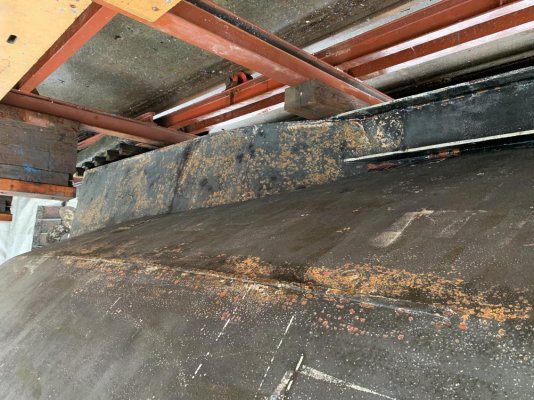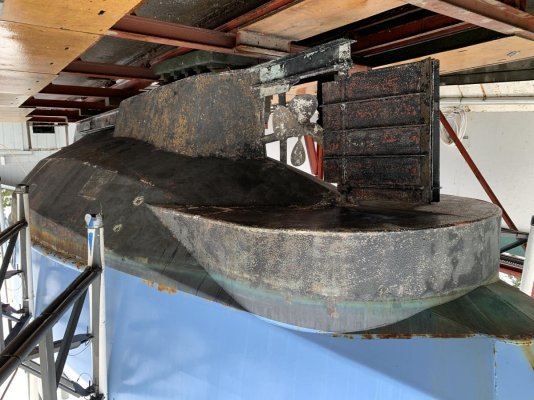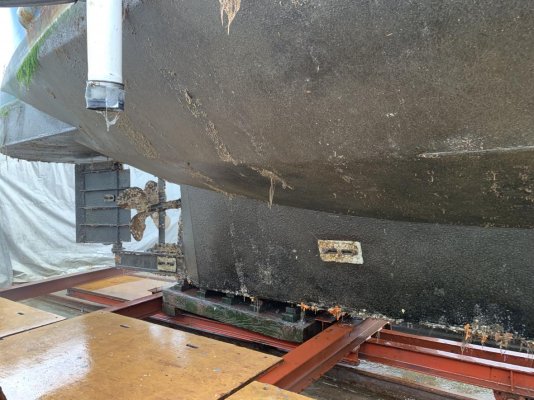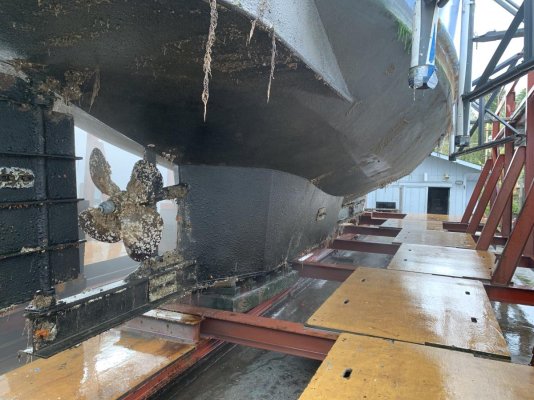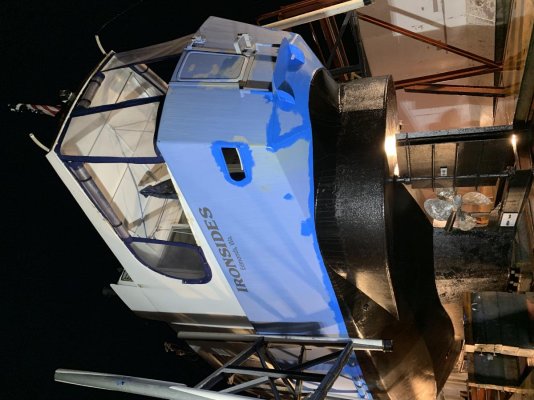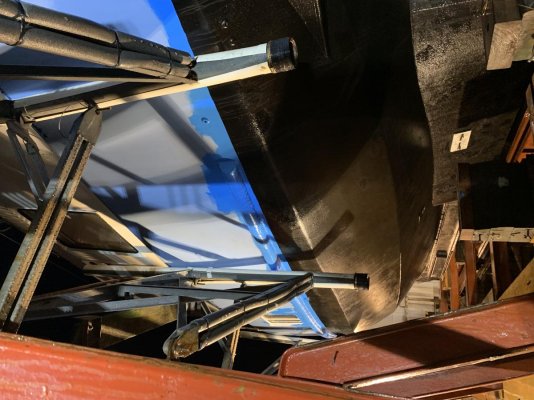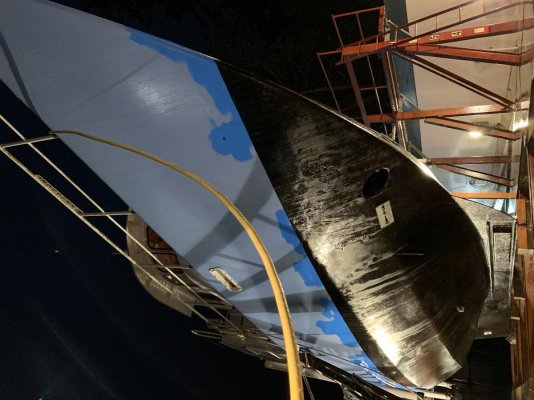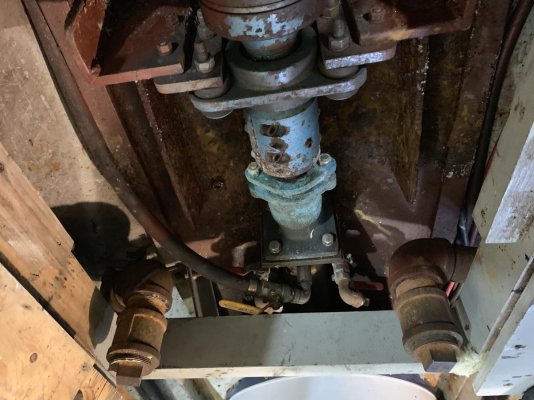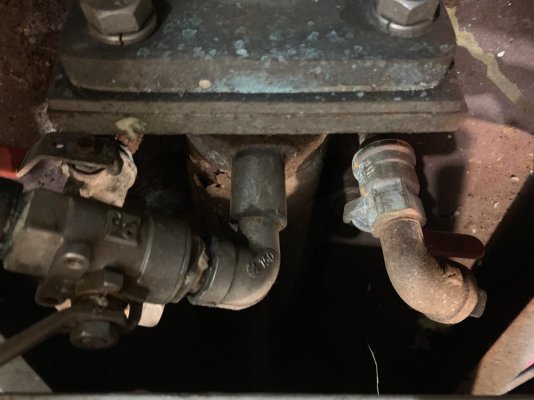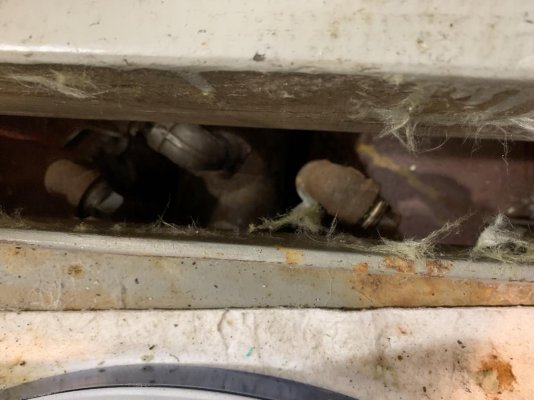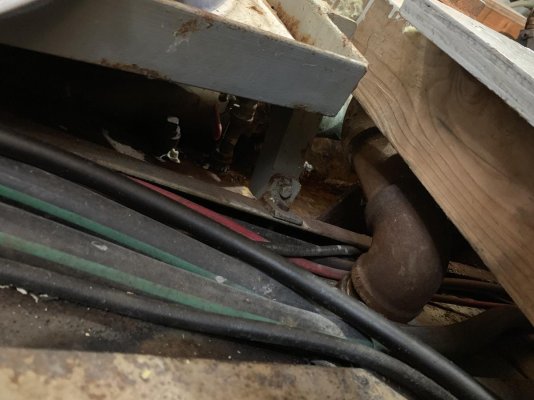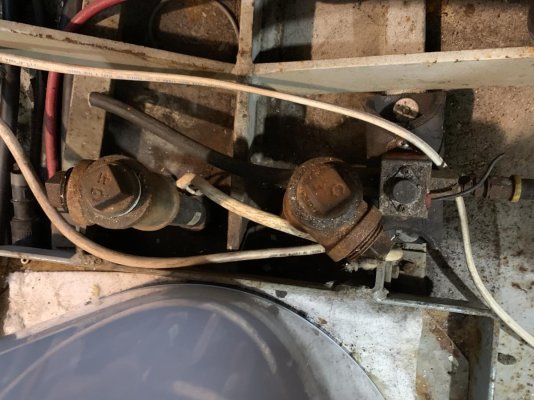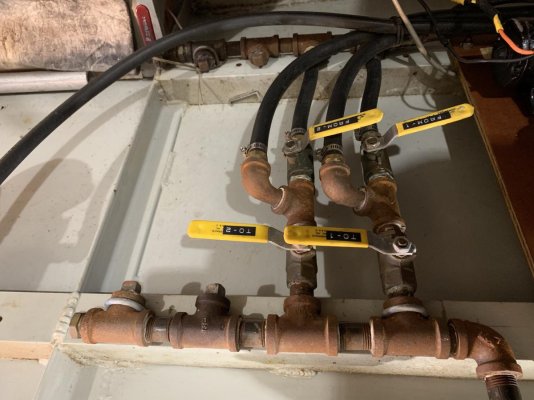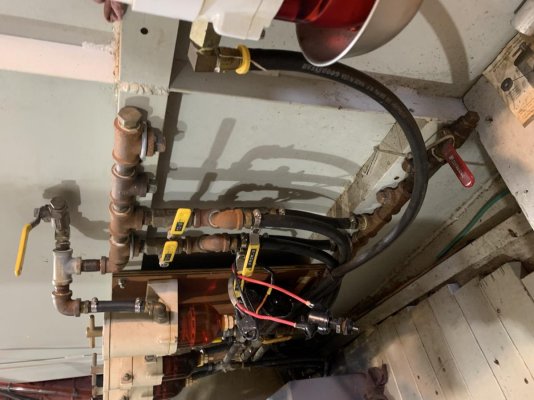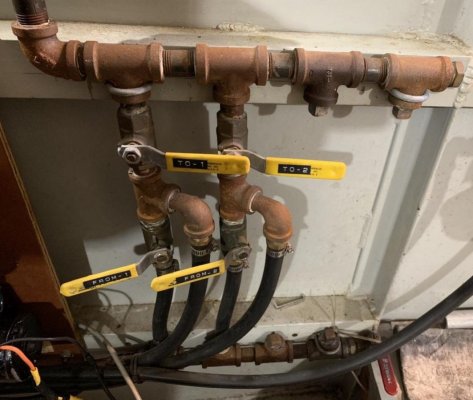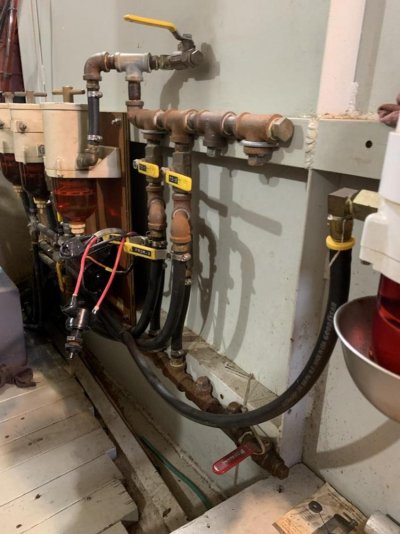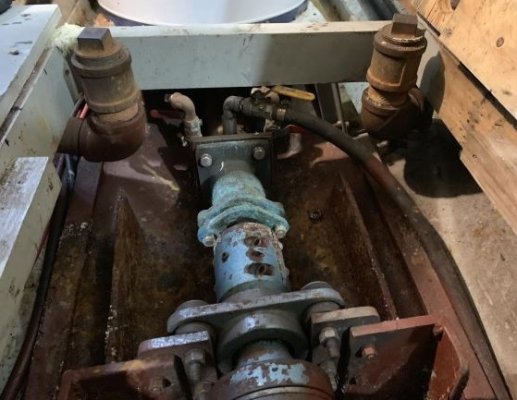Flooding it with water for ballast. Firstly, water is not very heavy, even though it is cheap.
It seems a really crummy, inefficient jerry-built way of going about things, and it has left you with a problem you should not have.
Much better to use steel scrap in a little concrete and get the weight down lower.
However, that was not the main concern of my post. I was more concerned with suggesting a method by which you can measure plate wastage in those areas, so you will not have to open them up.
It seems a really crummy, inefficient jerry-built way of going about things, and it has left you with a problem you should not have.
Much better to use steel scrap in a little concrete and get the weight down lower.
However, that was not the main concern of my post. I was more concerned with suggesting a method by which you can measure plate wastage in those areas, so you will not have to open them up.

